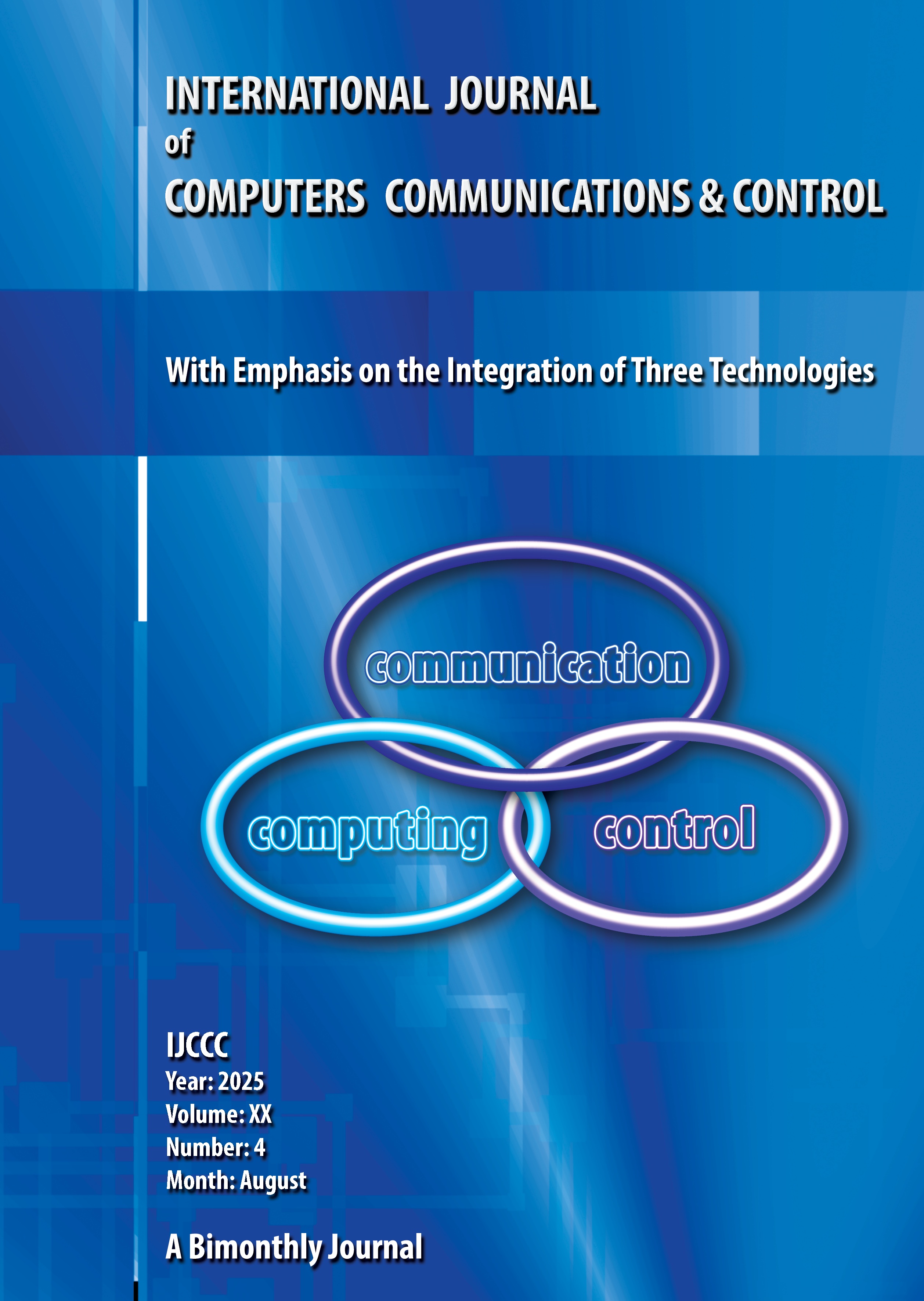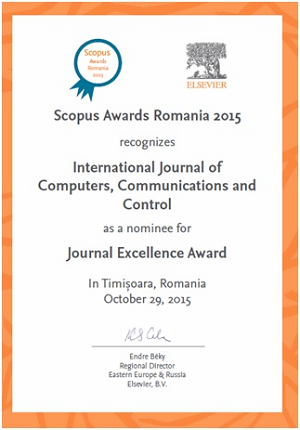A Genetic Particle swarm optimization based Hybrid Scheduling Algorithm for Cloud Computing Resources
DOI:
https://doi.org/10.15837/ijccc.2025.4.6814Keywords:
Cloud computing; Resource scheduling; Genetic algorithm; Particle swarm optimization algorithm; WOA; Bi-LSTMAbstract
As the quick advancement of information technology, cloud computing technology has risen rapidly, but the energy consumption and resource waste generated by data centers are also increasing. Therefore, the study analyzed the hybrid scheduling of cloud computing resources. Firstly, a improved particle swarm optimization algorithm-based resource scheduling model was raised to address the initial placement problem of virtual machines. Secondly, considering that the resource requirements of applications in cloud computing environments are dynamically changing, attention mechanisms and whale optimization algorithms were introduced to optimize the bidirectional long short-term memory network and build a resource demand prediction model. The results showed that when the amount of virtual machines was 200, the energy consumption of the improved particle swarm algorithm was 6.19 kW/h. The completion time of the algorithm always did not exceed 2000ms under different numbers of virtual machines and tasks. When the problem size was 500, the proposed resource demand forecasting model tended to converge at around 100 epochs. The prediction accuracy and recall rate of the proposed resource demand forecasting model were 94.35% and 93.62%, respectively. The experiment outcomes indicate the resource scheduling and resource demand prediction effectiveness of the raised model. The outcomes contribute to improving the service quality and effectiveness of the entire cloud platform, and promoting the development of cloud computing technology.
References
Peñalvo FJ, Sharma A, Chhabra A, Singh SK, Kumar S, Arya V, Gaurav A. (2022). Mobile cloud computing and sustainable development: Opportunities, challenges, and future directions. International Journal of Cloud Applications and Computing (IJCAC). 12(1):1-20. https://doi.org/10.4018/IJCAC.312583
Oke AE, Kineber AF, Al-Bukhari I, Famakin I, Kingsley C. (2023). Exploring the benefits of cloud computing for sustainable construction in Nigeria. Journal of Engineering, Design and Technology. 21(4):973-990. https://doi.org/10.1108/JEDT-04-2021-0189
Khallouli W, Huang J. (2022). Cluster resource scheduling in cloud computing: literature review and research challenges. The Journal of supercomputing. 78(5):6898-6943. https://doi.org/10.1007/s11227-021-04138-z
Mansour RF, Alhumyani H, Khalek SA, Saeed RA, Gupta D. (2023). Design of cultural emperor penguin optimizer for energy-efficient resource scheduling in green cloud computing environment. Cluster Computing. 26(1):575-586. https://doi.org/10.1007/s10586-022-03608-0
Huang X, Lin Y, Zhang Z, Guo X, Su S. (2022). A gradient-based optimization approach for task scheduling problem in cloud computing. Cluster Computing. 25(5):3481-3497. https://doi.org/10.1007/s10586-022-03580-9
Katal A, Dahiya S, Choudhury T. (2023). Energy efficiency in cloud computing data centers: a survey on software technologies. Cluster Computing. 26(3):1845-1875. https://doi.org/10.1007/s10586-022-03713-0
Mark J, Bommu R. (2024). Tackling Environmental Concerns: Mitigating the Carbon Footprint of Data Transmission in Cloud Computing. Unique Endeavor in Business & Social Sciences. 3(1):99-112.
Islam R, Patamsetti V, Gadhi A, Gondu RM, Bandaru CM, Kesani SC, Abiona O. (2023). The future of cloud computing: benefits and challenges. International Journal of Communications, Network and System Sciences. 16(4):53-65. https://doi.org/10.4236/ijcns.2023.164004
Kunduru AR. (2023). Security concerns and solutions for enterprise cloud computing applications. Asian Journal of Research in Computer Science. 15(4):24-33. https://doi.org/10.9734/ajrcos/2023/v15i4327
Cinar B, Bharadiya JP. (2023). Cloud computing forensics; challenges and future perspectives: A review. Asian Journal of Research in Computer Science. 16(1):1-4. https://doi.org/10.9734/ajrcos/2023/v16i1330
Nabi S, Ahmad M, Ibrahim M, Hamam H. (2022). AdPSO: adaptive PSO-based task scheduling approach for cloud computing. Sensors. 22(3):920-920. https://doi.org/10.3390/s22030920
Malik M, Suman. (2022). Lateral Wolf Based Particle Swarm Optimization (LW-PSO) for Load Balancing on Cloud Computing. Wireless Personal Communications. 125(2):1125-1144. https://doi.org/10.1007/s11277-022-09592-3
Syed D, Shaikh GM, Rizvi S. (2024). Systematic Review: Particle Swarm Optimization (PSO) based Load Balancing for Cloud Computing. Sir Syed University Research Journal of Engineering & Technology. 14(1):86-94. https://doi.org/10.33317/ssurj.608
Nabi S, Ahmed M. (2022). PSO-RDAL: Particle swarm optimization-based resource-and deadlineaware dynamic load balancer for deadline constrained cloud tasks. The Journal of Supercomputing. 78(4):4624-4654. https://doi.org/10.1007/s11227-021-04062-2
Srivastava A, Kumar N. (2023). An energy efficient robust resource provisioning based on improved PSO-ANN. International Journal of Information Technology. 15(1):107-117. https://doi.org/10.1007/s41870-022-01148-9
Mangalampalli S, Swain SK, Mangalampalli VK. (2022). Multi objective task scheduling in cloud computing using cat swarm optimization algorithm. Arabian journal for science and engineering. 47(2):1821-1830. https://doi.org/10.1007/s13369-021-06076-7
Kaveh M, Mesgari MS. (2023). Application of meta-heuristic algorithms for training neural networks and deep learning architectures: A comprehensive review. Neural Processing Letters. 55(4):4519-4622. https://doi.org/10.1007/s11063-022-11055-6
Alhijawi B, Awajan A. (2024). Genetic algorithms: Theory, genetic operators, solutions, and applications. Evolutionary Intelligence. 17(3):1245-1256. https://doi.org/10.1007/s12065-023-00822-6
Chen C, Zhang Q, Kashani MH, Jun C, Bateni SM, Band SS, Dash SS, Chau KW. (2022). Forecast of rainfall distribution based on fixed sliding window long short-term memory. Engineering Applications of Computational Fluid Mechanics. 16(1):248-261. https://doi.org/10.1080/19942060.2021.2009374
Tang J, Li Y, Ding M, Liu H, Yang D, Wu X. (2022). An ionospheric TEC forecasting model based on a CNN-LSTM-attention mechanism neural network. Remote Sensing. 14(10):2433-2433. https://doi.org/10.3390/rs14102433
Nadimi-Shahraki MH, Zamani H, Asghari Varzaneh Z, Mirjalili S. (2023). A systematic review of the whale optimization algorithm: theoretical foundation, improvements, and hybridizations. Archives of Computational Methods in Engineering. 30(7):4113-4159. https://doi.org/10.1007/s11831-023-09928-7
Additional Files
Published
Issue
Section
License
Copyright (c) 2025 Yiyong Wang

This work is licensed under a Creative Commons Attribution-NonCommercial 4.0 International License.
ONLINE OPEN ACCES: Acces to full text of each article and each issue are allowed for free in respect of Attribution-NonCommercial 4.0 International (CC BY-NC 4.0.
You are free to:
-Share: copy and redistribute the material in any medium or format;
-Adapt: remix, transform, and build upon the material.
The licensor cannot revoke these freedoms as long as you follow the license terms.
DISCLAIMER: The author(s) of each article appearing in International Journal of Computers Communications & Control is/are solely responsible for the content thereof; the publication of an article shall not constitute or be deemed to constitute any representation by the Editors or Agora University Press that the data presented therein are original, correct or sufficient to support the conclusions reached or that the experiment design or methodology is adequate.








